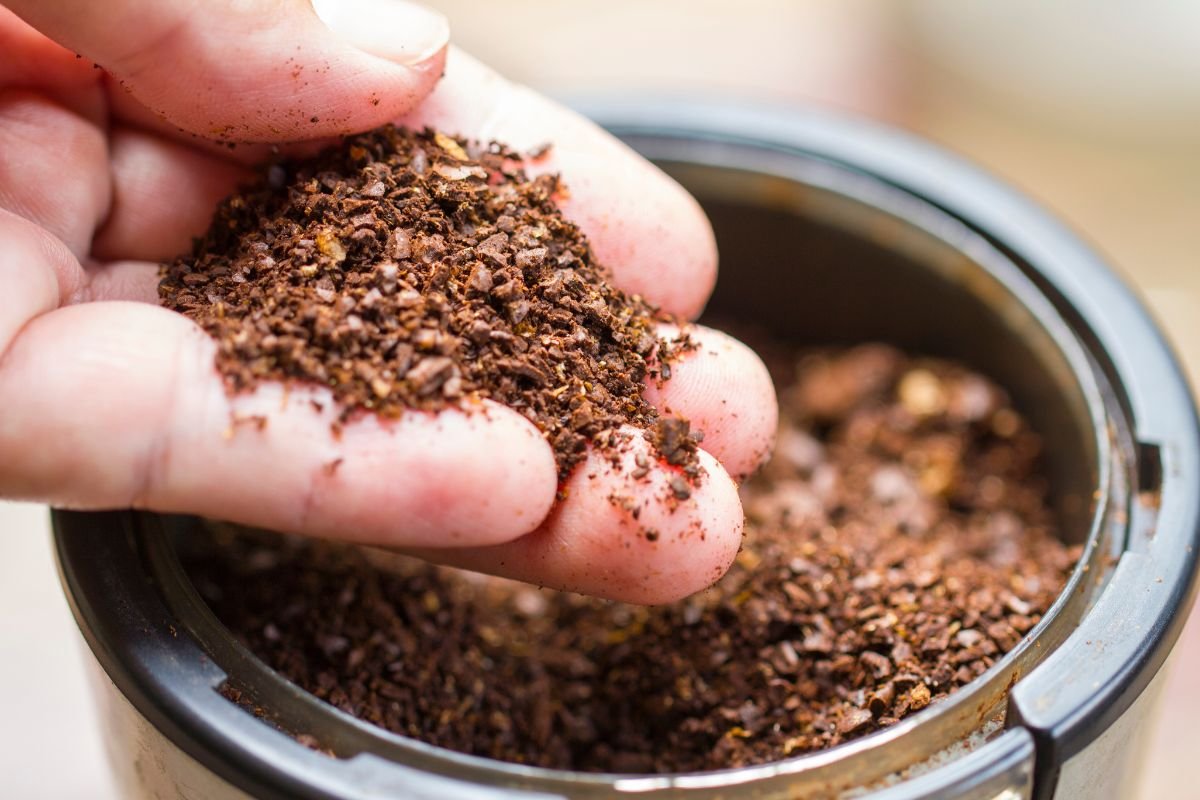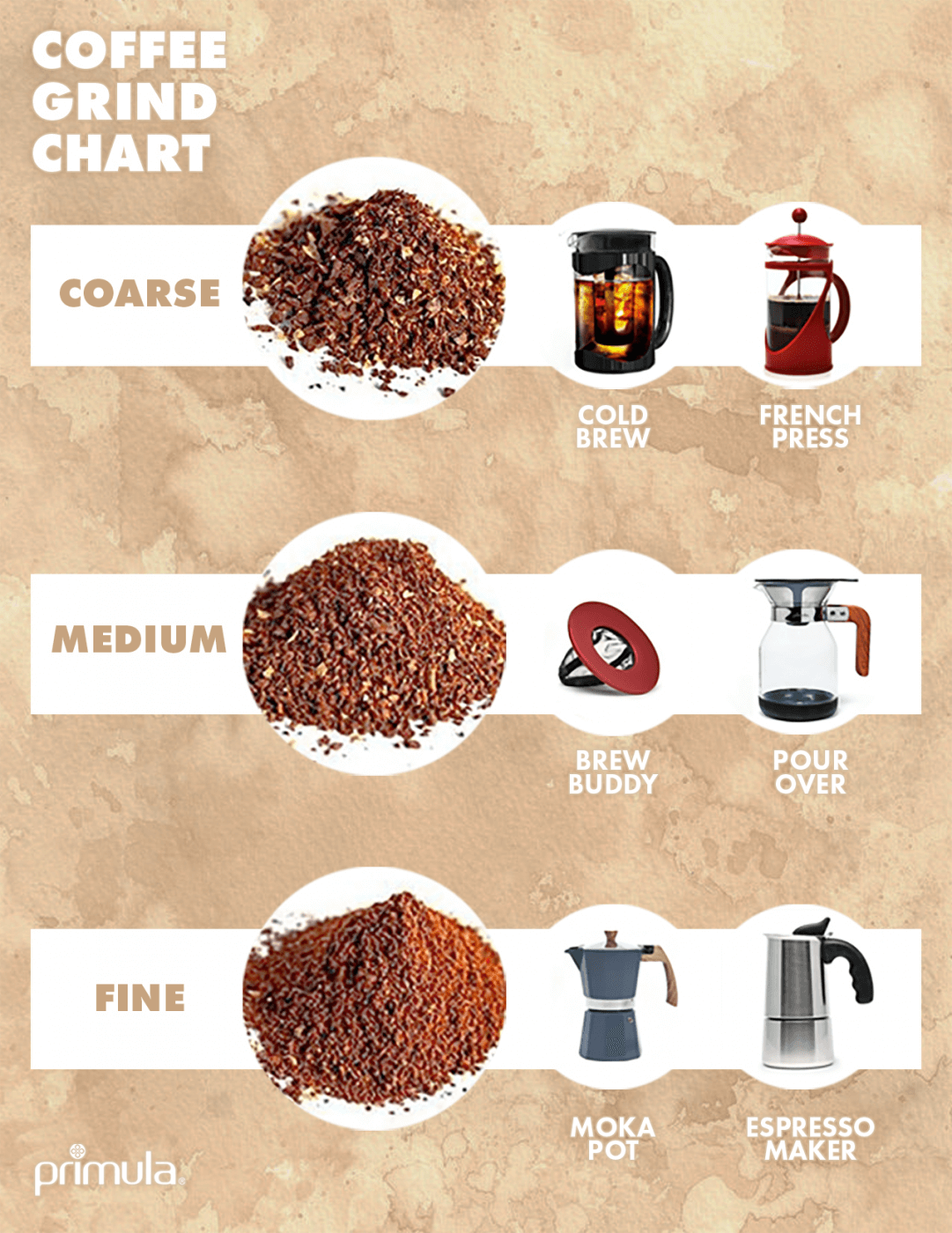Understanding Coffee Grind Sizes and Their Impact on Brewing
When it comes to brewing the perfect cup of coffee, one of the most crucial factors to consider is the grind size of your coffee beans. Whether you’re using a French press, espresso machine, or drip coffee maker, the coffee grind size significantly impacts the extraction process and the final flavor of your brew.
Why Coffee Grind Size Matters
If you love coffee, you know that the way you brew it can make a big difference in taste. One of the most important factors in brewing a great cup of coffee is the grind size of your coffee beans. But what does “grind size” mean, and why is it so crucial?

Simply put, grind size refers to how finely or coarsely you grind your coffee beans. It can range from very fine, like powdered sugar, to very coarse, like sea salt. The grind size affects how quickly water extracts flavor from the coffee grounds when brewing. This means that using the right grind size can help you achieve the perfect balance of flavors in your coffee.
Why Should You Care About Grind Size?
- Flavor Extraction: Different grind sizes lead to different extraction rates. A fine grind exposes more surface area to water, which can speed up extraction. This is great for methods like espresso that require quick brewing. On the other hand, a coarse grind allows for slower extraction, which is ideal for methods like French press that steep for a longer time. If you don’t get the grind size right, your coffee can taste bitter or weak.
- Brew Method Compatibility: Every brewing method has its own ideal grind size. For example, espresso machines need a fine grind, while French presses work best with a coarse grind. Using the wrong size can result in less than perfect coffee. Knowing which grind size works for your method helps you brew a better cup.
- Consistency: Achieving the same great taste every time you brew is important for coffee lovers. Using the right grind size ensures that you’re getting consistent results. This means you can enjoy a delicious cup of coffee without the guesswork.
Different Coffee Grind Sizes
Understanding the various coffee grind sizes is essential for brewing the perfect cup of coffee. Each grind size is suited for specific brewing methods, affecting extraction and flavor. Here’s a breakdown of the different grind sizes available:

1. Coarse Grind
Description: The consistency is similar to sea salt or raw sugar. Best For:
- French Press: Allows for a longer steeping time without over-extraction.
- Cold Brew: The coarse grind helps prevent bitterness during the extended brewing process.
2. Medium-Coarse Grind
Description: Gritty texture, like sand or slightly larger grains. Best For:
- Pour-Over (Chemex, Hario V60): This grind size promotes good extraction while maintaining clarity of flavor.
- Siphon Brewing: Works well for balanced extraction and flavor.
3. Medium Grind
Description: Similar to granulated sugar, with a smooth texture. Best For:
- Drip Coffee Makers: Most machines are designed for medium grind, providing a balanced extraction.
- Aeropress (with longer brew times): This grind size can also be effective if you’re using a longer steeping method.
4. Medium-Fine Grind
Description: Slightly gritty, finer than sand but not as fine as table salt. Best For:
- Pour-Over (like Kalita Wave): Offers a balance between quick extraction and flavor clarity.
- Aeropress (with shorter brew times): Ideal for a quick and rich cup.
5. Fine Grind
Description: Powdery texture, similar to table salt or sugar.
Best For:
- Espresso Machines: Fine grind is essential for quick extraction under pressure.
- AeroPress (with short brew times): Helps achieve a concentrated flavor quickly.
6. Extra Fine Grind
Description: Very powdery, similar to flour. Best For:
- Turkish Coffee: This grind size is necessary for traditional Turkish coffee, where coffee is brewed in boiling water.
- Specialty Espresso Methods: May be used in specific high-pressure brewing techniques.

How Grind Size Affects the Taste of Coffee
The way you grind your coffee beans can make a big difference in how your coffee tastes. Here’s how different grind sizes impact the flavor and overall experience of your brew:
- Extraction Rate
– Surface Area: When you grind coffee beans, finer grinds have more surface area exposed to water. This means that water can pull out flavors faster. Coarser grinds have less surface area, which slows down this process.
– Flavor Impact: If your grind is too fine for your brewing method, it can lead to over-extraction, making your coffee taste bitter. If it’s too coarse, the coffee can be under-extracted, resulting in a weak or sour taste. - Brew Time Compatibility
– Quick Brew Methods: For methods like espresso that brew quickly, a fine grind is necessary. It allows for strong flavors to be extracted in a short time. If you use a coarse grind for espresso, the coffee will likely taste watery and bland.
– Slow Brew Methods: Coarser grinds are better for methods like French press or cold brew, which take longer to brew. This longer time helps develop rich flavors without bitterness. A fine grind here can lead to a harsh taste because it over-extracts. - Flavor Profile Development
– Balanced Flavor: Using the right grind size helps you achieve a well-balanced flavor. For example, medium grinds work well in drip coffee makers, giving you a smooth and consistent taste.
– Clarity of Flavor: Finer grinds can produce stronger flavors, while coarser grinds often lead to a cleaner cup. For instance, a medium-coarse grind used in a pour-over method can bring out fruity or floral notes in the coffee. - Aroma Release
– Smell Matters: Grinding coffee releases smells that add to your overall experience. Finer grinds release these aromas quickly, enhancing the smell but can also lead to bitterness if brewed incorrectly.
– Brewing Method Impact: In methods like Chemex or pour-over, a medium grind allows for a nice balance of flavors and aromas, creating a more enjoyable cup. - Consistency and Uniformity
– Even Grinding: Getting an even grind is important for consistent flavor. If some pieces are fine and others are coarse, some will taste bitter while others taste weak.
– Quality Grinder: Using a good burr grinder can help you achieve an even grind size, improving the taste of your coffee.
How to Achieve the Right Grind Size
1. Choose the Right Grinder
Investing in a good coffee grinder is essential for achieving consistent grind sizes. There are two main types of grinders:
- Blade Grinders: These are typically less expensive but can produce uneven grinds. They chop coffee beans rather than grind them, leading to varying particle sizes.
- Burr Grinders: These are preferred by coffee enthusiasts as they provide a uniform grind size. Burr grinders like Baratza Sette 270, Baratza Encore crush the beans between two metal or ceramic plates, allowing for precise control over grind size.
2. Experiment with Grind Sizes
Don’t hesitate to experiment with different grind sizes to find what works best for your brewing method and taste preferences. Start with a baseline grind size for your chosen method, then adjust as needed based on the flavor profile you desire.
3. Pay Attention to Brew Time
As you experiment with grind sizes, keep an eye on your brew time. If your coffee tastes bitter, try a coarser grind or shorten the brew time. If it tastes weak or sour, consider using a finer grind or extending the brew time.
Common Brewing Methods and Their Grind Size Needs
- Espresso – Grind Size: Fine
Espresso requires a fine grind size to ensure quick extraction under high pressure. Aim for a grind similar to table salt. The brewing time is around 25-30 seconds, so achieving the right grind is crucial for a balanced shot. - French Press – Grind Size: Coarse
For French press brewing, a coarse grind is ideal. This allows for a longer steeping time of about 4 minutes without over-extraction. A grind resembling sea salt works well here, as it helps prevent sediment in your cup. - Pour Over – Grind Size: Medium to Medium-Coarse
Pour over methods, like the Hario V60 or Chemex, typically use a medium to medium-coarse grind. This range allows for good extraction while maintaining clarity of flavor. The brewing time is usually between 2-4 minutes. - Drip Coffee Makers – Grind Size: Medium
Drip coffee makers generally work well with a medium grind size. This ensures a balanced extraction during the brewing cycle, which typically lasts around 5-6 minutes. - AeroPress – Grind Size: Medium to Fine
Description: Similar to table salt for fine grind or granulated sugar for medium.
Why: The AeroPress can accommodate various grind sizes depending on the brewing time. A finer grind is ideal for shorter brew times, while a medium grind works well for longer steeping. - Cold Brew – Grind Size: Coarse
– Description: Like sea salt or larger crumbs.
– Why: Cold brew requires a long steeping time (12-24 hours). A coarse grind helps prevent over-extraction and ensures a smooth, less acidic cup of coffee. - Moka Pot – Grind Size: Medium-Fine
– Description: Slightly finer than sand but not as fine as espresso.
– Why: The Moka pot brews coffee using steam pressure, similar to espresso but at a lower pressure. A medium-fine grind allows for proper extraction without clogging the filter.
Understanding how coffee grind sizes affect brewing is key for anyone who loves coffee. The grind size has a big impact on how your coffee tastes, smells, and feels. Whether you’re making espresso with a fine grind or using a coarse grind for a French press, each brewing method has its own needs that can change the flavor of your drink.
Choosing the right grinder, either a burr grinder for consistency or a blade grinder for convenience, can help you achieve better results. Taking the time to experiment with different grind sizes will let you discover new flavors and improve your coffee experience.
In the end, brewing coffee is both fun and a bit of a science. With some practice and the right knowledge, you can make coffee that suits your taste perfectly. So, get your coffee beans, find the right grind size, and enjoy making your best cup of coffee yet!
